This Is How Our Recent Wars Looked to Acclaimed Photojournalist Peter van Agtmael (Interview)
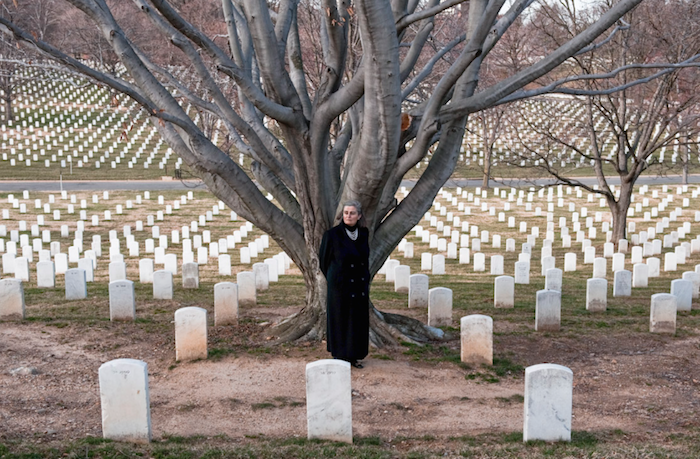
I was scared of war but also comfortable in it.
I had felt it in me from the beginning of my consciousness.
I didn’t know what form it would take,
but I always knew I would go.
Peter van Agtmael, Disco Night Sept 11
In his impressionistic new book, Disco Night Sept 11, award-winning photojournalist Peter van Agtmael juxtaposes his moving photographs of the US wars in Iraq and Afghanistan with images that capture the disconnect of Americans at home and reflective words about each picture.
Over seven years, Mr. Van Agtmael got to know many soldiers at the front, and followed veterans—several with horrific wounds—at home. He also met the families of soldiers who died and civilians who suffered in war torn lands. The book vividly shows what war does to people, the brutality and absurdity of industrialized conflict now—as a war-weary populace at home ignores the terrible price of state violence pursued in its name.
Mr. Van Agtmael presents a haunting montage of recent history. A large US soldier rides a small donkey in Iraq as perplexed villagers look on (“The troops took turns riding the donkey”). An Afghan soldier wears eyeliner into battle. Blood smears the floor of an emergency room in Baghdad. At home, a smiling woman aims a toy gun at an amputee veteran. Families attend solemn rituals of mourning. Graveyards. Gravediggers. At a hotel, a pair of veterans chat, each one missing an arm. Graffiti on an air base wall: “Only the dead have seen the end of war.”
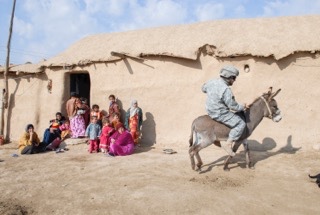
Disco Night provides an innovative, non-chronological history that tackles two complex, parallel stories of raging war and indifference at home. The book has been widely praised for the art of Mr. Van Agtmael’s photography and the power of his words by an array of reviewers from NBC News and Mother Jones to Photo-Eye and The British Journal of Photography.
For the past decade, Mr. Van Agtmael has been exploring America and its foreign policy through his documentary photography for publications including The New Yorker, The New York Times Magazine, Time and The Wall Street Journal. His first book was 2nd Tour Hope I Don’t Die, a collection of early photos from the Mideast wars. Mr. Van Agtmael began serious work in photography as a student at Yale. After graduation in 2003, he received a fellowship to live in China for a year and document the consequences of the Three Gorges Dam. In 2005, he covered the Asian Tsunami, then relocated to Johannesburg, South Africa, and covered sub-Saharan Africa. He began extensive work on US wars as an embedded photographer with the military in 2006 and, between tours to Iraq and Afghanistan, photographed in the US. Recently, he has been covering US cities as well as the conflict in Gaza.
Mr. Van Agtmael is a member of Magnum Photos and has won numerous awards for his work, including a W. Eugene Smith Grant, the Lumix FreeLens Award, the World Press Photo Award, and many others.
He recently talked about his work from his home in New York shortly before departing for work in Israel and the Palestinian Territories.

Robin Lindley: How did you come to write, Disco Night Sept 11?
Peter van Agtmael: After I put out my book 2nd Tour a few years ago, I felt that book was premature. I was happy with that book, but felt it was fundamentally unfinished. I kept shooting work on the subject since then. I experimented with some of the older material from 2nd Tour and the newer imagery and realized it didn’t make sense organically to be two books, so I mashed it all together to tell the experience holistically.
Robin Lindley: How did you decide on the title Disco Night Sept 11?
Peter van Agtmael: The title comes from a street sign reading “Disco Night Sept 11” in Hopewell Junction, New York [at the Arbor Ridge Catering and Banquet Hall]. I was just back from Iraq in 2010 and I was driving and that glowing sign came out of the darkness. I was stunned. For me that sign symbolized the disconnect that the populace was feeling for the wars. It seemed a fitting symbol of where we were as a country in reckoning about the choices we made. It was a potent reminder that, through American history, we tend to involve ourselves in the world in all sorts of destructive ways and, if we ever know about it at all, we tend to quickly lose interest in it. So it was a symbol of these wars and of American foreign policy since the end of World War II.
Robin Lindley: That image conveys the sense of unthinking public acceptance of endless war and yet ignoring it.
Peter van Agtmael: That’s the gist of it. We’re so isolated here that our engagement with the world is limited to what’s presented to us mainly through the media, and that version is often without much informational merit and often deeply skewed and makes no attempt to provide historical context at all. It makes us eternally into a country that doesn’t know its own history or only knows a selected version that may or may not have that much to do with reality.
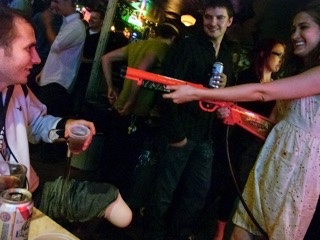
Robin Lindley: You provide a special form of history of post 9/11 America with impressionistic writing and photographs that seem almost random, rather than a conventional, chronological history.
Peter van Agtmael: The first book was structured war-home-war basically, and organized around the title, 2nd Tour Hope I Don’t Die. As I started thinking more about my work over the years, I realized that the chronology wasn’t that important. These wars weren’t about decisive events, but about an ongoing grind. Day to day, the patrols looked similar no matter where you were. There were small shifts in strategy but the forms of engagement were similar, and I was left with the same impression going back and forth to these places.
Simultaneously [I had] this sense of going back and forth to the wars and never being quite home and never being quite in the wars that I felt and I think a lot of the soldiers felt. That scrambling disconnection was part of the idea for the structure.
Another part of it was these simultaneous existences we’re constantly present in. Whatever we see in front of us is very small. When I thought about the sum weight of the destructiveness of the wars over the years, I thought of the incalculably small percentage of it I’d witnessed so, with the structure, I wanted to mimic how little we are a part and present at these events.
Robin Lindley: Your photos present an unusual perspective. Afghan soldiers wearing eyeliner and makeup into battle. A large U.S. soldier riding a small donkey in Nineveh, Iraq.
Peter van Agtmael: The thing about war is that it’s hard to see beyond the violence and the sadness and the destruction. But because I spent so much time going back and forth, I realized there was only so much I could say and do with that imagery. So instead, I decided to pull back and open my eyes wider and try to confront the places as myself rather than as someone in the tradition of war photography. While I have a deep reverence for those traditions and try to practice them to an extent myself, I knew there was room for a more personal interpretation that was grounded in the universal. The more surrealistic images began to appear organically.
I was struck by the utter and complete strangeness of the experience. It’s presented in a solemn, serious and formalized way to the public while combined with an almost titillating approach. The thing that struck me the most was how extremely bizarre everything was. It’s so outside of our daily experience as Americans, so it seems surreal.
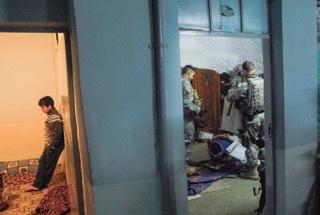
Robin Lindley: You’re a renowned photojournalist but you’ve also been praised an artist. Are there special influences you thought about when creating this book?
Peter van Agtmael: I’ve drawn from a wide range of inspirations over the years. It started with photojournalism with people like [war photographer] James Nachtwey, Philip Jones Griffith in Vietnam Inc., and Eugene Richards, all of whom combine pictures and words. Beyond that, in the art and craft of photography, people like Eggleston, Winograd, Jeff Wall, and Richard Avedon became huge influences. In some ways, because I have an open-ended style, subconsciously I was trying to integrate the lessons I was learning from great photojournalists and great artists. And there are painters too. I can look at Hieronymus Bosch for hours. Or Caravaggio. Or Goya. Lessons from the classical painters became important to me as well.
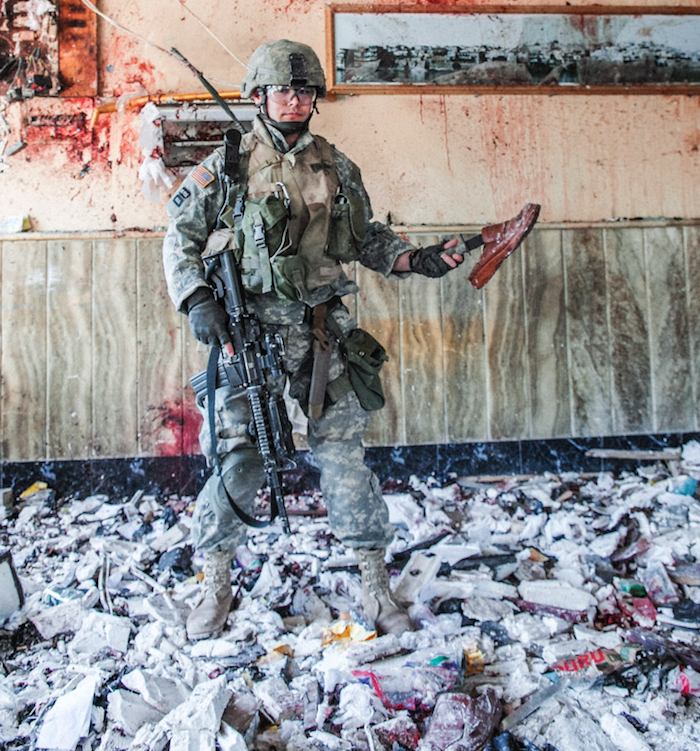
Robin Lindley: How did your work as a photographer embedded with US forces compare to your independent work?
Peter van Agtmael: I was embedded when I first went over in 2006 because it was the only practical option. I was working with a press agency but didn’t have an assignment, and it was not safe or cost-effective for me to work on the streets.
Embedding became compelling to me because I realized I didn’t know much about America. I grew up in a bubble. I went to private school and then to Yale and then went abroad. I hadn’t discovered my own country at all.
I started to discover America through these wars. A lot of what I saw horrified me, but unexpectedly I became very close to a lot of the people I met. I realized how different they were from me and yet how similar and it made me want to engage with what it meant for America to be at war.
Over time though, I realized how much of the other story I was missing because, when you’re embedded with the Americans, you’re in such a bubble that you’re not engaging with the local people and culture. When I was with the soldiers, the civilians saw me as part of that machine. I dressed in civilian clothing and tried to be respectful and deferential. A few people understood, and some grabbed me if they thought there was something I should document, but mostly they looked at me with fear as much as anything else.
It was a different story when I was unembedded. Hospitality in these traditional cultures is still well entrenched. I carefully planned what I was doing. I always worked with a fixer who understood the local land. I was always touched by how warmly I was welcomed. I think it was a gesture that meant a lot by trusting Iraqis and Afghans given the risks and tensions.
So my experiences being unembedded were overwhelmingly positive. This book is incredibly America-centric and it’s a much better understood part of the wars. As much it’s the predominant view in the US, it’s really a small part of who is actually affected by all of this.
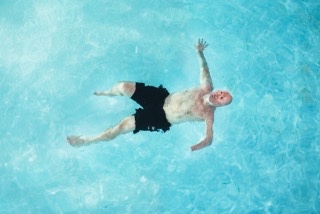
Robin Lindley: Your stories are touching about the soldiers you met and how you kept in touch with many—or their families—when you got home. I was struck by the story of Bobby Henline, a soldier who suffered severe burns to his face and upper body and lost a hand—and then took up comedy.
Peter van Agtmael: Bobby used his injuries to find direction and meaning in his life. He wanted to be a career soldier and, when he was so badly wounded in a Humvee explosion, he lost that option.
When he was recovering in physical therapy, he cracked a lot of jokes in what was otherwise a somber place. He was encouraged by the staff to try stand up comedy. And he began doing that. And, because he’s disfigured and people stare at him, cracking one-liners became a way for him to break the ice. He’d see people’s reactions and start a conversation. He worried about being objectified and comedy provided a reason to keep going and a way of engaging. It seems a very thoughtful, emotionally mature way of dealing with [his injuries]. He performs all over, all the time now.
It helped that he was in his late thirties when he was hurt and he had a family and children. He had a different perspective than younger soldiers who are injured and haven’t lived much of a life yet.
Robin Lindley: You’ve also spent time with surviving spouses and children of soldiers who died and attended military funerals. It seems people at home lost interest in the deaths and funerals as time went on.
Peter van Agtmael: It depended on the community how much people engaged with the families. In smaller, more tight knit communities there was an outpouring of support following a collective trauma. The bigger the city, the more disconnected people are from these events, so it’s more anonymous. And, from what I saw in 2006 and then in 2010, there were just less people engaging—a byproduct of the passing of time and the distancing effect of the repetition of the war as pushing people away. I guess other traumas in the world supplanted these.
Robin Lindley: You describe soldiers who suffered with posttraumatic stress disorder [PTSD] and traumatic brain injury? You mentioned a former combat soldier who worked as Army public relations person. He had a brain injury and he said he would lose brain function over time.
Peter van Agtmael: I thought he was interesting because he symbolized many guys I met who have a warrior spirit where they feel they were born to serve, to be at the tip of the spear. Despite their traumas—losing friends, losing function—they still want to get back into it. There’s a vast range of reactions to the same kinds of events because it depends on the individual’s personality and circumstances.

Robin Lindley: You’ve been exposed to horrific combat and wounded and dying soldiers as well as civilians, and it must have troubled you at times. Your early experience covering the combat and the emergency room in Baghdad must have been a shock when you started covering the wars.
Peter van Agtmael: Certainly some of my earlier experiences took their toll on me for a while. I had trouble adapting to a normal life at home. Like a lot of these guys, the war defined me and became the center of my existence and the thing I invested in, and other things I let slide as a result. Being obsessed and trapped in that cycle wasn’t healthy physically or emotionally.
Over time, I began to reckon with my experiences, confront them and go to therapy. As a result, it’s easier to deal with those issues. I found a way of defining my place in the world in a way that I could emotionally encounter these things but also move on from them, [or] absorb them rather than repel them. I think I’ve developed good tools for coping and being emotionally aware.
Robin Lindley: Are you still working in conflict zones?
Peter van Agtmael: I’ve worked more in Palestine in the last two years. It embodies a lot that interests me, and it’s easy for me to move between the dysfunctional worlds there. I’m still engaging with conflict but not quite as intensely as before.
Robin Lindley: What are you thoughts on the new US engagement with the Islamic radicals of ISIS of ISIL?
Peter van Agtmael: I can’t comment politically, but it just seemed inevitable to me. The last time I was in Iraq was before the pullout and in Afghanistan before the troop surge, and it became clear that these problems weren’t going to be fixed in a matter of years. There were issues with the armies, the governance, the sectarianism, the development. All of these issues are so much vaster than our ability to transcend them. These things have had an air of inevitability, and I think we’ll be connected to these places for an extremely long time.
Robin Lindley: You’ve written that, when you were a boy, you were fascinated by war and that you always knew you’d somehow go to war.
Peter van Agtmael: That’s something that’s primal and pre-consciousness, which is why I relate to soldiers who want to return to war despite what has happened. That interest was with me from my earliest memories and it doesn’t make any sense. I doesn’t have to do with my family background or the environment I grew up in. And, in college, when I put together that I was interested in war but didn’t want to be a soldier and was interested in history and documentation, and found a love for photography, that became the inevitable route that clicked into place. I didn’t have to think too much about it. It was a mystical realization.

Robin Lindley: And you just started working as a photojournalist after college it seems to have been the arc of your life since then.
Peter van Agtmael: Yes, pretty much. I do different things. I’ve spent five years on stories all around America trying to understand this country and I’m working on a book about that now. I started this project simultaneously with the war work, and that will continue.